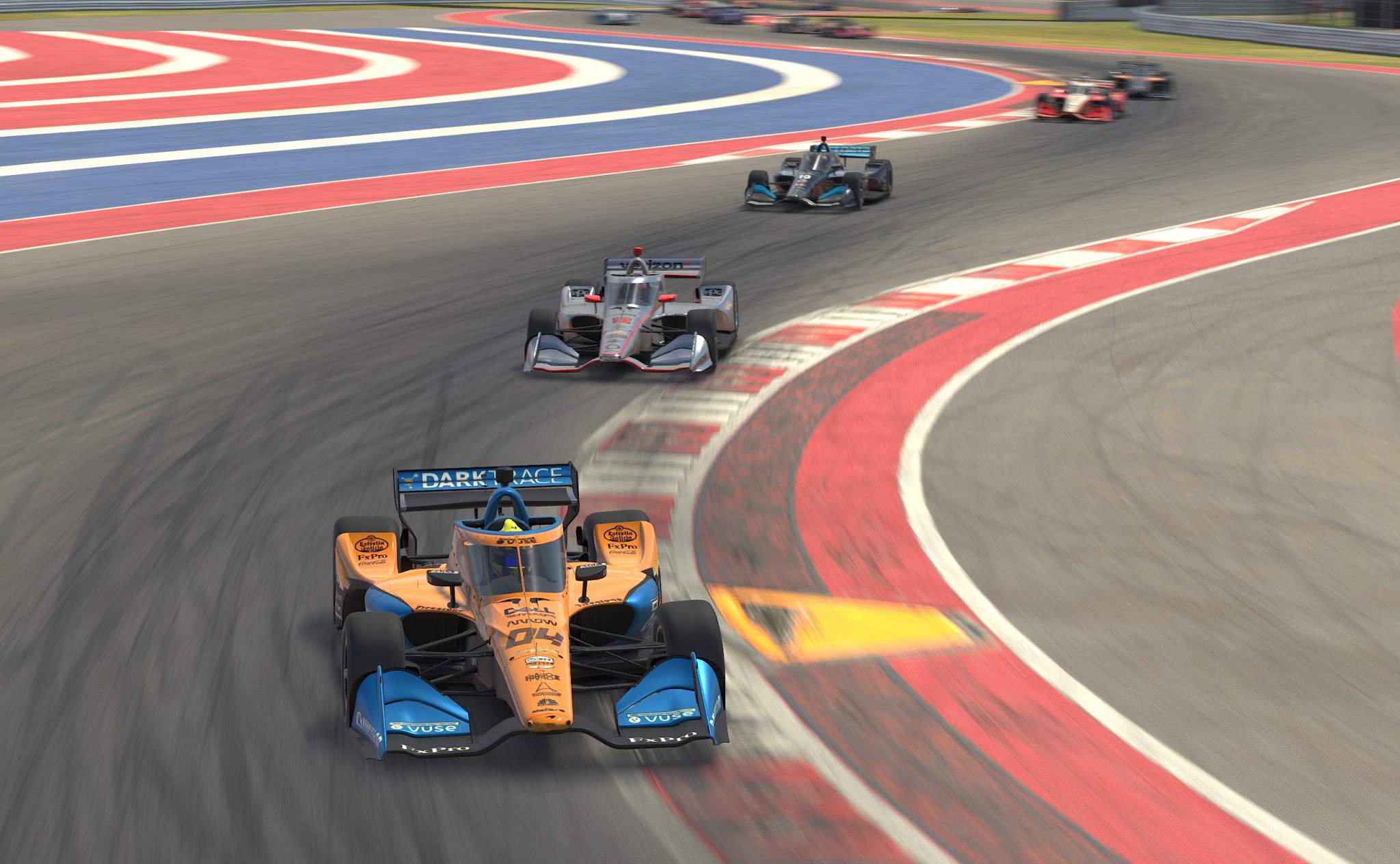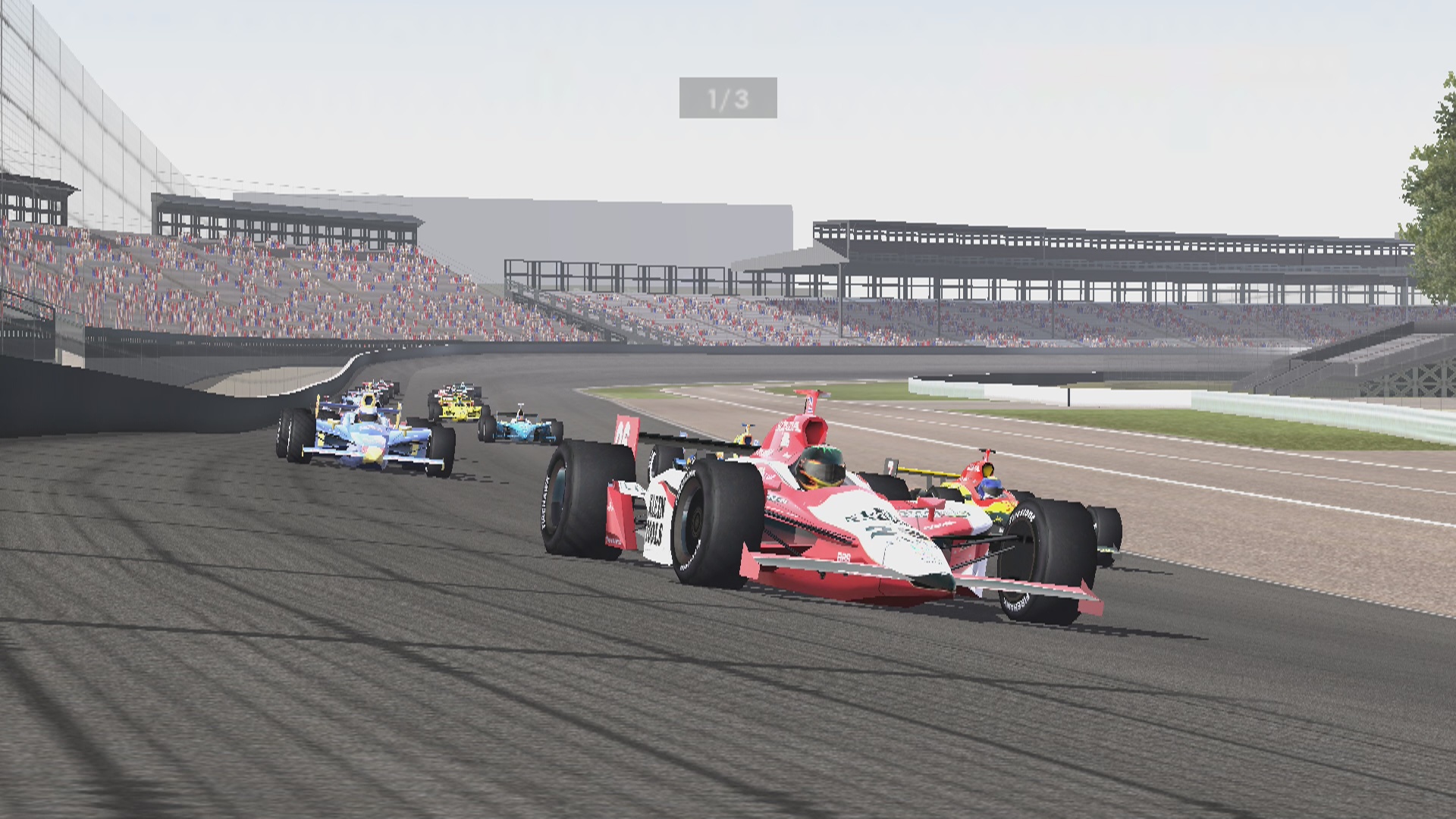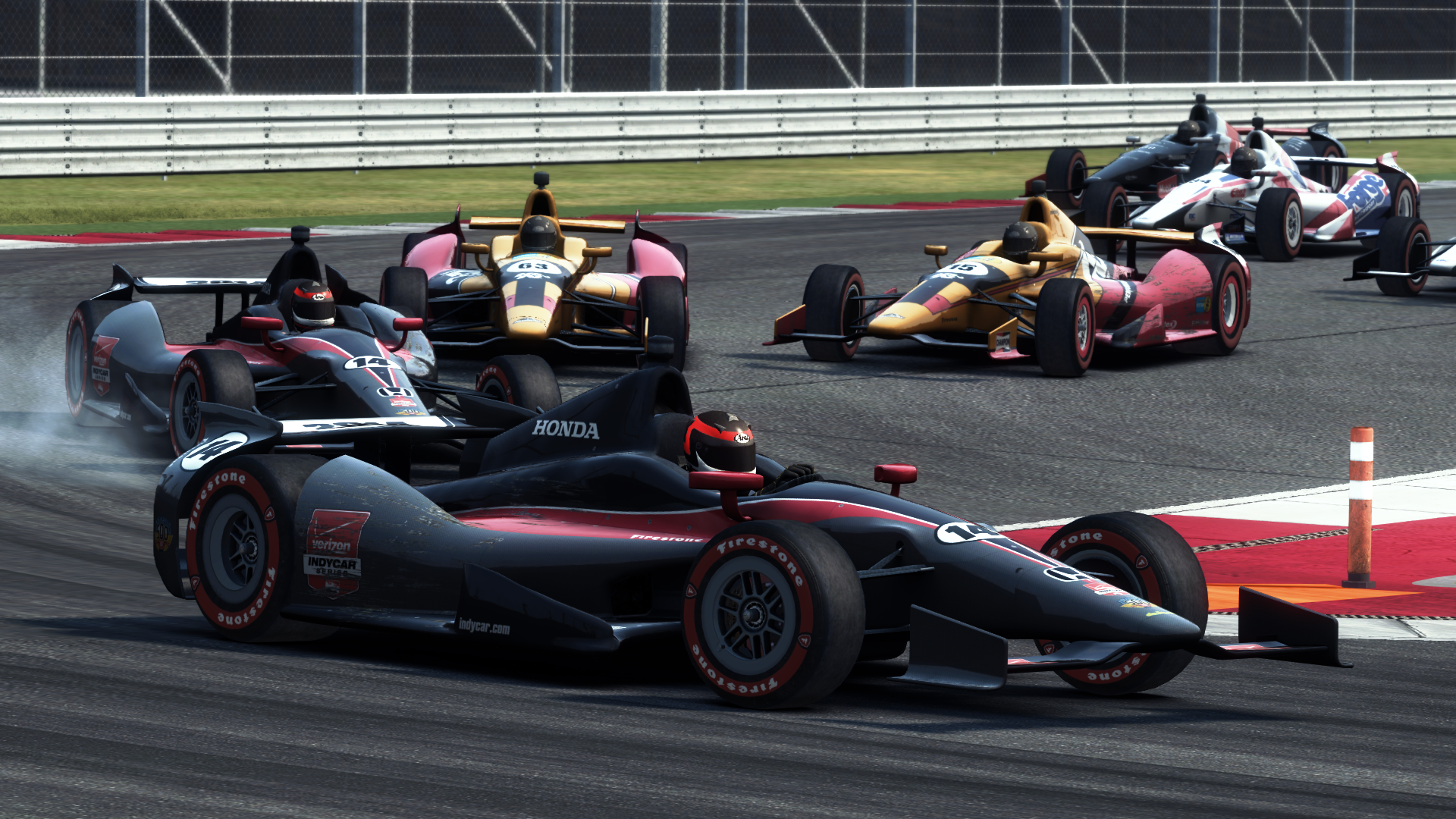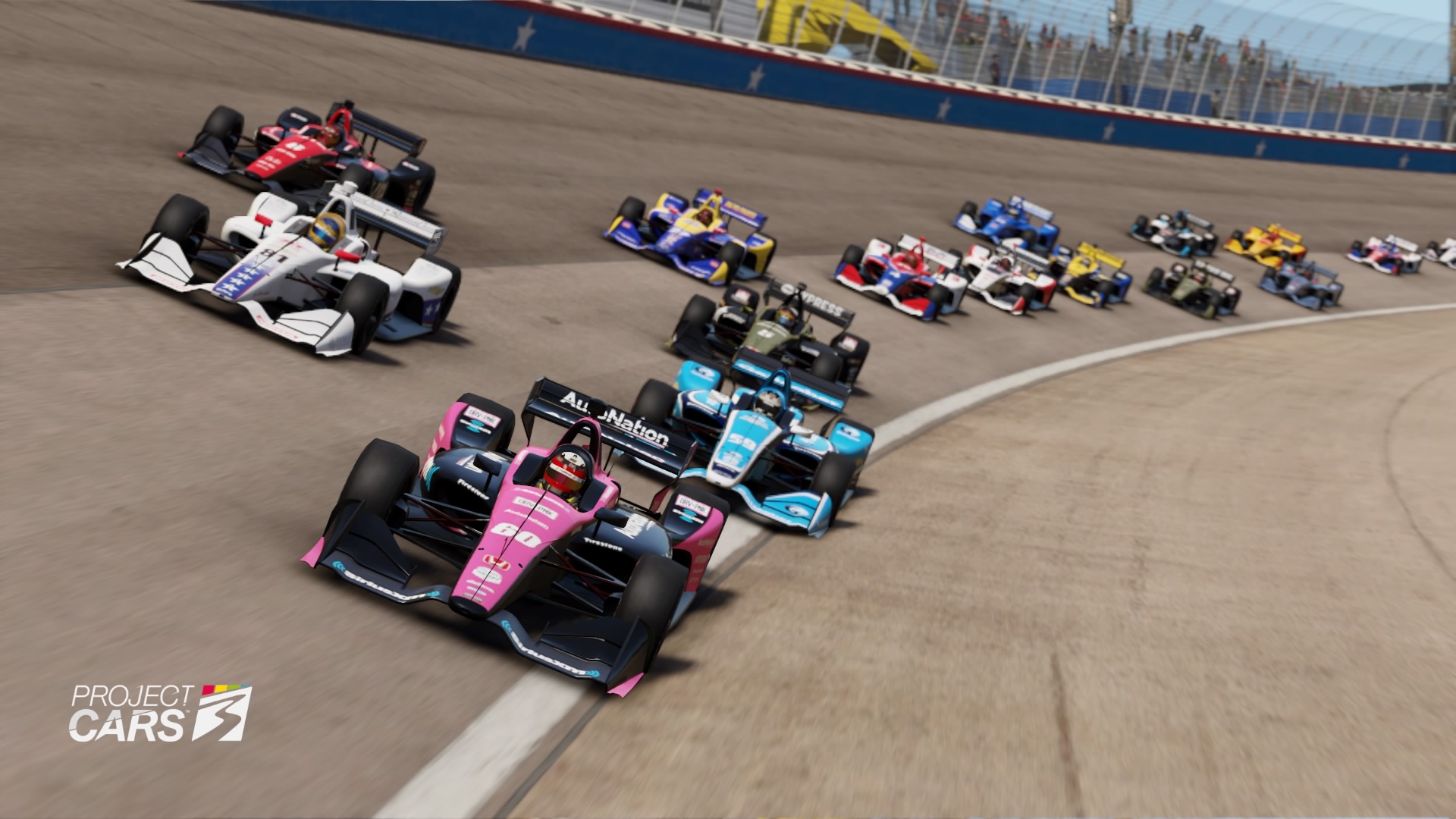Throughout the nineties and into the early noughties, there were a considerable number of licensed IndyCar games. However, the series’ foray into full-fledged video games stopped after IndyCar Series 2005 and then most recently Indianapolis 500 Evolution which came out in 2009 and tracked real-life events from 1961 to 1971.
In the entirety of the previous decade though there were no video games dedicated solely to IndyCar. But that’s not to say that the championship has been entirely absent from virtual representation.
Of the myriad of older IndyCar games, the two standouts are the generically titled IndyCar Racing and its sequel IndyCar Racing II. Both games were developed by Papyrus Design Group who are also known for Grand Prix Legends and NASCAR Racing 2003 Season, both of which came after their IndyCar titles.
Papyrus was known for creating simulation focused, PC racing games and their IndyCar titles, including Indianapolis 500: The Simulation which was released for MS-DOS in 1989, were all examples of that.
Nowadays the remnants of Papyrus’ work are on full display in iRacing since work on the subscription-based platform started after the demise of Papyrus when David Kaemmer, the co-founder of Papyrus, started work on iRacing.
More recently iRacing has been the main home of serious, virtual IndyCar racing and licensed cars. During the mass cancellation of real-world motorsport events early in 2020, iRacing was the choice of platform for the stand-in IndyCar iRacing Challenge.

It’s expected that iRacing will still be the home of IndyCar esports events until the newly announced IndyCar game gets released in two years time.
During the drought of IndyCar games there have been a number of different franchises that have had licensed IndyCar cars as a part of the car roster and iRacing is just one of many. So there’s been no shortage of adaptations of the championship in virtual form despite the lack of a full game dedicated to IndyCar.
Whilst Codemasters didn’t pursue another full IndyCar game after IndyCar Series 2005, TOCA Race Driver 3 featured licensed IndyCar cars, teams and drivers from the 2004 and 2005 seasons. That’s not the complete 2004 or 2005 grid but an amalgamation of those two years.
By no means was IndyCar the only licensed championship in the game as there was full DTM and V8 Supercars licensing as well as a wide variety of other championships that had some degree of official representation.

The IndyCar series in TOCA Race Driver 3 is limited to four circuits and all of them are ovals. Specifically Gateway International, Dover International Raceway, Indianapolis and Nashville Super Speedway.
The team and driver selection were also padded out by some fictional entries, which is a recurring theme as often the Dallara produced car was licensed by game developers but without the full licensing of any individual season.
GRID 2 and GRID Autosport featured the Dallara DW12 IndyCar which meant you could have reasonably conventional races, or have ones that would never see the light of day for a number of reasons.
So at one end of the scale, you could do a race around the Indianapolis oval or with the grand prix layout. There’s also the potential to hold a race at the Circuit of the Americas years before IndyCar went there for the first and so far only time in 2019.

If you want to then you could even have a race with the IndyCar cars at European circuits like Donington or Istanbul Park or you could hold a race at one of the game’s many city street locations including San Francisco or Paris.
Whilst TOCA Race Driver 3 tried to be fairly realistic and grounded but was bound to some extent by technical limitations, the GRID series has always prioritised exciting racing and an easy to get to grips with handling model over an attempt at proper simulation.
Codemasters weren’t the only developers to regularly include IndyCar as Forza Motorsport 5, 6 and 7 all have had licensed cars from either 2013, 2015, 2017 or 2019.
Forza Motorsport 7 had the 2017 and 2019 spec cars, which means it’s one of the few games to have up to date IndyCars from the most recent reworking of the aerodynamics.
One advantage Forza Motorsport has over many other games that feature IndyCar is the customizability of the cars. In Forza Motorsport 7 you can fit either road course or oval spec wings but you can also create your own custom liveries.
The livery editor has long been one of the highlights of the series and Forza Motorsport is often used as the benchmark of how to pull off an extensive editor that lets players have a huge amount of freedom. So what Forza Motorsport lacks in terms of realism it makes up for in the ability to make your car look however you want and that’s allowed the community to make all sorts of modern or historically inspired liveries to use for your car in the game.
In terms of out and out realism though if you’re a console gamer and so you don’t have access to iRacing, then the best way to have a more faithful IndyCar gaming experience is through Project CARS.

Specifically, the first two games because the most recent, third entry in the franchise, made the unpopular move to be less hardcore and appeal to more casual players.
The original Project CARS had the 2014 spec car with the second featuring the 2016 model and most recently Project CARS 3 had the Dallara IR18 from 2019 with the liveries used by the teams that year.
The series offers players the freedom to go as conventional as they want, so the ovals available in the second game include Daytona, Texas and Indianapolis. The road course options Laguna Seca, Road America and Long Beach, so there’s enough content variety to create a fairly deep and realistic IndyCar experience despite it not being a game dedicated exclusively to the championship.
Part of the joy of Project CARS though is that you can hold a race with any conceivable set of circumstances. As an example, you could have a full IndyCar race at Bathurst in the snow, as implausible as that be in real life. Given Project CARS 3’s lax approach to realism though, it’s quite fitting for that game whilst its predecessor is your best shot for a simulation focused experience.
On top of that, the two most recent games have three cars that competed in the Indy 500 in the 1960s, namely the 1963 Agajanian Watson Roadster as well as the Lotus Type 38 and 56 from 1965 and 1968 respectively.
With IndyCar still two years away from getting a long-awaited game focused exclusively on the series itself, your best bet for the time being, is still to go through the multitude of games that have taken onboard the IndyCar license and adapted it to their own style of game.








